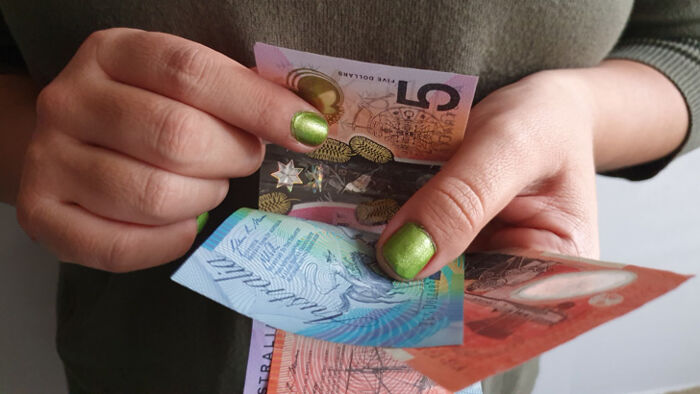How cash stuffing is helping Aussies save
In a world that thrives on speed and instant gratification, it may seem counterintuitive to argue for slower banking processes.
However, there is a case to be made for applying the breaks: it might just stop people from sinking further into debt or getting scammed.
Young savers are raving about "cash stuffing" or the "cash envelope system" as a means to saving more money.
Start cash stuffing
Rather than pay their bills or expenses through their bank, a new generation of savers is withdrawing thousands of dollars from the ATM and putting $5, $10, $20 and $50 notes into envelopes for each expense item.
For example, if someone who gets a weekly salary knows that a $180 bill is due in three months, each week they "deposit" $15 into an envelope to cover it. This method sounds onerous, but it works. Search the hashtag #cashstuffing on social media and you'll see more than 1.1 billion views and thousands of devotees.
The method can be done in two ways: using real cash or prop cash, which you then reconcile with your funds in the bank.
For those who don't want to go through the paper-based approach, most banks offer a spending tracker in their app that can be used for the same purpose.
This allows you to keep your money in the bank and earn the extra interest you won't get from the traditional envelope system.
Check the spending categories
As of June this year, the big four banks (CBA, ANZ, NAB and Westpac) all offer a spending tracker in their app.
Whenever you pay for a purchase or pay a bill, the bank automatically puts it under the most sensible category the transaction should fall under. Westpac's app, for example, tracks 20 types of expenses, including utility bills, fees and charges, and insurance expenses.
You may want certain expenses to be categorised differently, which can be done by editing or changing the tags and category names in the app.
Get a better home loan
Unlike traditional cash stuffing, using the spending tracker could help you improve your credit score.
For example, those who have a credit rating of 600 or less out of a top score of 1000 points are unlikely to get the best home loan rate from their bank or another lender.
But over six to nine months if you can demonstrate an improvement in your expense management through a spending tracker, your credit score could go up to 700 or higher. The closer your points are to 1000, the better the interest rates on offer for you as a first-time borrower or if you're refinancing your home loan.
Spending trackers have a way of automatically showing you, warts and all, whether your expenses are almost as high as your income or if you're getting better at keeping your costs down.
Perhaps one of the most powerful benefits of going retro on the savings front is that cash-stuffing devotees become better at saving more money and avoiding impulse purchases.
Research shows that people who tap their cards to purchase items spend 18% more each month than those who use notes and coins. Known on social media as influencer "Carocash", a graphic designer turned online business owner, Caroline, says she has saved $30,000 in a year using the envelope method.
Another trend sweeping the internet is the 50-30-20 budgeting method. It's a classic budgeting principle where you allocate 50% of your income to all your main expenses, 30% to discretionary items (or stuff that you want to spend on) and the remaining 20% to savings.
But rather than putting all three expenses in three envelopes, you have separate bank accounts for the three.
The key is to pick a system that works for you, without forgoing some of the benefits that are already offered by your bank.
Get stories like this in our newsletters.



